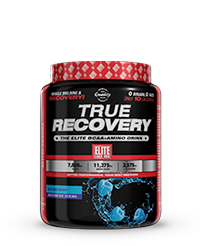
If you’re not growing as fast as you’d like, it’s time to try a full body blast for massive mass.
Arnold once said, “Milk is for babies. When you grow up, you drink beer.” The same gets said about full body training.
When you’re a beginner, you do full body workouts. When you “grow up,” you move onto more advanced split routines. That’s where you train chest and tris and Monday. Back and bis on Tuesday. Rinse and repeat every week. But the research disagrees.
In fact, the research suggests that continuing to follow a classic split-routine might make your muscle growth slower than it needs to be. Especially the more advanced you get.
The Research
Weightlifting triggers something called protein synthesis inside your muscles. And when protein synthesis is turned on, your muscles get the signal to grow. But did you know it’s possible that the longer you’ve been training, the less time that muscle-growth signal may stay turned on inside your muscles?
Researchers at McMaster University in Canada had untrained individuals perform an intense leg workout. After the workout, they measured levels of protein synthesis and found that muscle protein synthesis stayed active for 72 hours. But what they discovered after just 8-weeks of training was shocking.
After just 8-weeks of resistance training, muscle protein synthesis lasted for as little as 16 hours.1 Think about that. You go to the gym and train your legs hard. They grow for less than a day and then you wait a whole week before you do it again? No wonder muscle growth takes so long!
Now, consider this. What if you’ve been training for two, five, or ten plus years? How long do you think muscle protein synthesis stays active in your muscles? Four hours? Maybe eight?
Does it really make sense to train each bodypart once…or even twice…a week?
The Fix
With the above research findings in mind, the key to faster muscle growth may be to switch to a high frequency, low volume, full-body routine. Frequency refers to how often you train a body part. And volume refers to the number of sets you do.
Most split-body routines are low frequency and high volume, meaning you train a bodypart 1-2 times a week and perform 10-15 sets per body part. For example, on Monday you’d do 12 sets of chest, and then you wouldn’t train chest again until Thursday or the next Monday.
With a high frequency, low volume approach, you’ll train each body part 5-6 times a week. And each workout, you’ll do 3-5 sets for chest instead. And research shows that’s all you really need.
In a paper published in the Journal of Applied Physiology, researchers found that just 3 sets taken to muscle failure is enough to significantly increase muscle hypertrophy and muscle protein synthesis.2
Building Your Own Full Body Routine
Building your own full body routine is easy. In a traditional split-body part routine, you may do these 4 exercises on Monday.
Monday
3x Incline Barbell Press
3x Flat Dumbbell Press
3x Decline Hammer Strength Press
3x Cable Crossovers
With a full-body routine, you’ll divide the workload into 5 days. Here’s how it’ll look.
Monday: 4x Incline Barbell Press
Tuesday: 4x Flat Dumbbell Press
Wednesday: 4x Decline Hammer Strength Press
Thursday: 4x Cable Crossovers
Friday: 4x Incline Dumbbell Flyes
And, when you apply this to the entire body, your full body workout on Monday might look like this.
Monday
4x Incline Barbell Press
4x Barbell Rows
4x Shoulder Press
3x Leg Extensions
3x Barbell Curls
3x Cable Tricep Pushdowns
3x Standing Calf Raises
3x Cable Crunches
All you need to do now is to choose a different exercise each day for each muscle group, and you’ll have built your own full body routine.
Full-Body Forever?
No. Like with any training program, your body will adapt to your full body routine. So after 4-6 weeks of full body, switch back to a lower frequency, higher volume program. Or even a program where both the frequency and volume are moderate, instead, before starting another full body routine. These programs are certainly effective, and when alternated with full body routines, they can help keep your muscle growth gains coming throughout the year.
References
1. Tang, J. et al. (2008). Resistance training alters the response of fed state mixed muscle protein synthesis in young men. AJP: Regulatory, Integrative and Comparative Physiology, 294(1), R172-R178.
2. Cameron J. Mitchell et al. J Appl Physiol 2012;113:71-7





